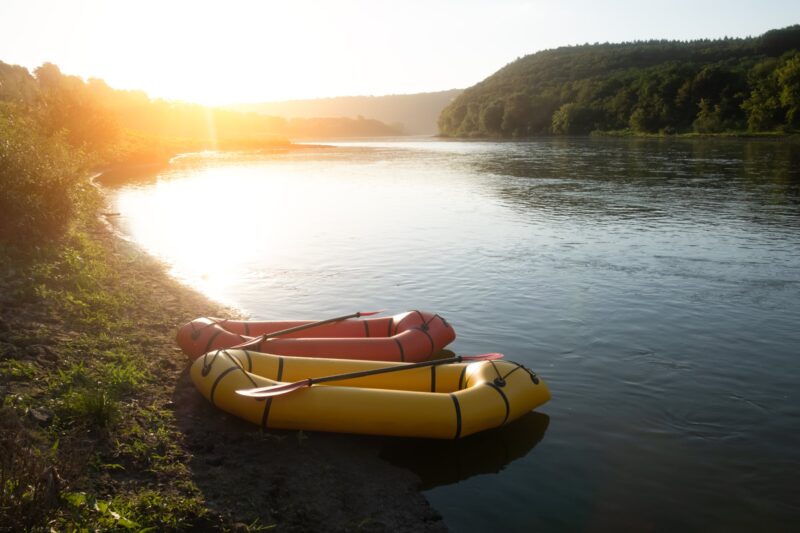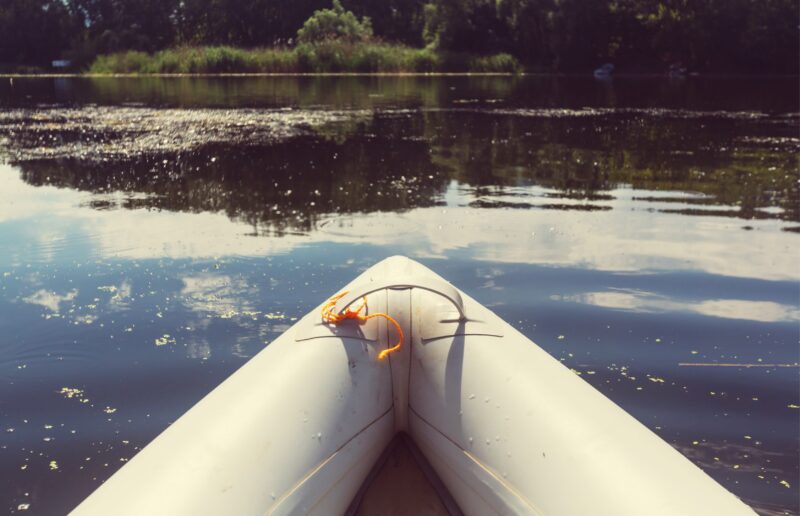Most outdoor sports come with rules and etiquette designed to respect the environment and protect us from accidents. River float trips are no different. In today’s blog, we’ll discuss common river rafting terminology you might encounter on Elk River or Big Sugar Creek.
River Terminology
Aced It: When a rafting group, kayaker, or canoeer performs an exceptional paddle maneuver to control the rivercraft, like around a river bend without running a ground or pushing past the crux of a river, like a chute, which is a narrow flow of water between two obstacles, like boulders, trees, or between two other rafts to avoid a collision.
Alluvial: A long-term deposit of sediment on the banks of a river that creates alluvial fans or sandbars, which are good spots for lunch and to rid yourself of your proverbial “sea legs.”
Cubic Feet per Second (CFS): A term that tells rivergoers the volume of water moving in a river. When you know a river’s CFS, you’ll know whether it is small, average, or giant. Small rivers push between 500-3000 CFS, such as the Elk River in Missouri, which moves 560 CFS on a good day. While big rivers like the Mississippi push 590,000 CFS or more.
Gradient: In river rafting, the gradient of a river is a crucial factor that determines the speed and intensity of the rapids. It’s measured in feet per mile (FPM), indicating how fast or slow a river runs. For example, ‘The Numbers’ of the Arkansas River, which is upstream from Buena Vista, CO, is a Class III-IV with incredibly fast-moving water that drops 70 FPM, offering adventure seekers the opportunity to run rapids. Another example is the moderate-flowing river of the Middle Fork of the Salmon in Idaho, which has a grade of 20-40 FPM. Then there are slow tributaries, like the Elk River in McDonald County, located in southwest Missouri, with more pools than drop conditions that has a grade of 7.8 FPM.
Lead Boat: The first boat in a small fleet of rivercraft.
Outfitters: This term might sound confusing, but it’s actually quite simple. It refers to a service business that provides all the necessary equipment and gear for a river float trip. These businesses are run by passionate individuals who love river float trips, like the team at Lazy Days Resort and Campground. So, if you’re planning a river rafting trip, remember to book with an outfitter like them!
Pools: These are areas along a river, between rapids, that tend to be deep, quiet stretches of the river. It’s like a little river oasis of calm in the midst of all the excitement. The currents are gentle enough to offer rivergoers an ‘out-of-boat experience,’ where they can float in the river enjoying its tranquility, much like what you’ll find on the Elk River in southwest Missouri.
Pool and Drop Conditions: Characteristics of a river with a calm section, called pools with intermittent stretches of rapids, known as drops.
Portage: When navigating challenging rapids, chutes, or impassable river features, such as waterfalls, all gear must be carried by hand below the drop.
River Channel: This is the deepest part of a river, primarily free of obstacles.
River Eddy: A section of a river where the current turns around and goes upstream due to its shape and contour.
Run: “A nice run” refers to a river section perfect for kayaking, rafting, or canoes.
Rapid(s): Rivers that have ripples, drops, and eddies are all caused by the amount of river obstacles that are either artificial or naturally occurring features, such as rocks, trees, geological uplift, and shallow water.
Standing Wave: To help you understand this term better, imagine a sizeable static wave forming when fast-moving water collides with slow-moving water.
Throw Bag: An essential part of river gear is a bag containing rope, or a floating line, which is used as a tow line, tie-off, or in urgent situations where a person needs rescuing.
Undercut: Mostly found on rivers with soft sedimentary rock, like limestone and sandstone, where a river’s current has cut away at the rock, creating an overhang or ledge. It’s best NOT to float underneath these areas.

